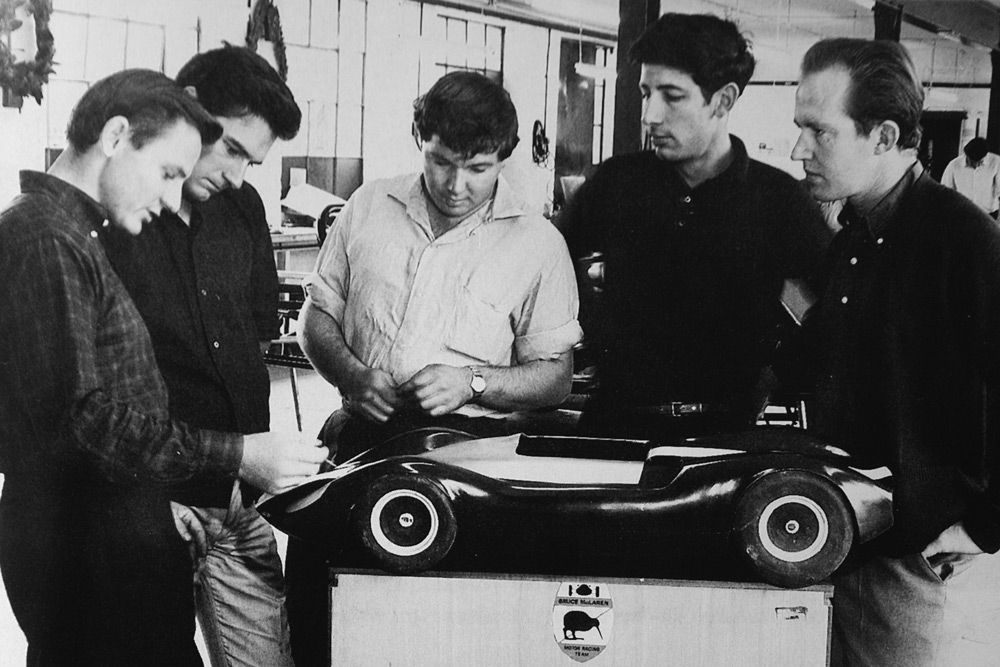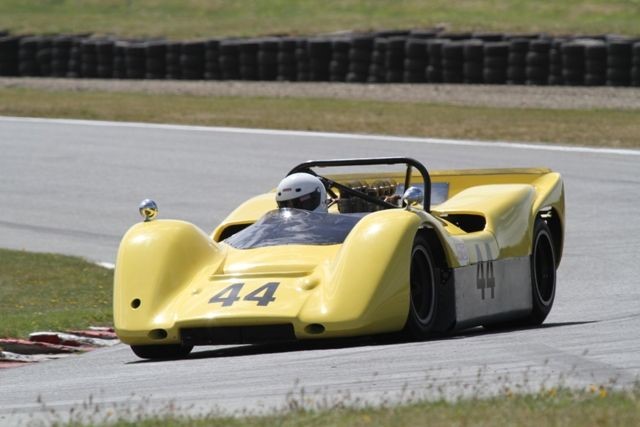The short story is that Walter John Willmott was born in Timaru on the last day of February 1941, became obsessed with motor racing. He was a foundation member of Bruce McLaren Motor Racing where he stayed until mid-1968. He lived for many years in Australia before moving to Invercargill where he started racing again – but there is so much more to the life of this Kiwi motor racing legend who passed away in Invercargill on the 7th of June.
On leaving school he took an apprenticeship as an automotive electrician – something that he is convinced served him better, for his future life ‘in racing’, than if he’d become a mechanic – “An auto electrician needs to understand the electrics as well as the mechanical side – so it so it proved to be the ideal training.”
The desire to go motor racing was immense and as soon as could, he purchased a 500cc Cooper F3 – “I was an enthusiastic rather than talented club racer and mostly competed in hillclimbs”. However a crash brought the first phase of his race driving to a premature halt – it would be more than four and a half decades before the second phase commenced.
“At the end of my apprenticeship, at the age of 20, I decided to take some ‘time out’ and follow, as a spectator – from the pits if possible – the Australian races as part of the predecessor of the Tasman Series. I had a couple of connections from Timaru – Eoin Young (‘ESY’) and Patricia McLaren, but at that stage I didn’t know Bruce.”

ESY was always a man for making connections and while in Sydney, waiting for the cars to arrive by boat, Eoin mentioned to Wally that Angus Hyslop was looking for someone to ‘look after his car’ – “…payment was food and accommodation, and it was ‘find your own way to the next race’ but Angus was a mate of Bruce so they shared ‘garages’ at each venue.”
That year – 1962 – McLaren was driving a Cooper for Tommy Atkins who owned ‘High Efficiency Motors’ and Wal quickly formed a friendship with the mechanic tending that car – Harry Pearce.
“At the end of the Series, Bruce told me of a job opportunity at High Efficiency Motors and – as was fast becoming the norm, all I had to do was find my own way from Sydney to England – Kingston on Thames to be exact, where Harry had organised accommodation in a pub for me. Then followed lots of phone calls to New Zealand to sell what I could and to tell my mother that what was only going to be a three week trip away from home, may be a little extended…”
Wally spent 1962 based in the south-western outskirts of London working on the High Efficiency Motors Cooper that Bruce drove in non-championship races.

Bruce had planned to compete in the Australian Grand Prix on the 18th of November that was to be run for the second, and last, time on the Caversham Airfield, some 16 kilometres north-east of Perth. From Australia the Cooper-Climax would be shipped to New Zealand for the first Grand Prix on the new Pukekohe circuit.
Wally was employed by Bruce for the sortie ‘Down Under’ that proved to be fairly successful with victories in Western Australia, the Lady Wigram Trophy, and at Teretonga. The win they really wanted was the New Zealand Grand Prix but that would have to wait however for Wally, there were no thoughts of staying in New Zealand – “No, no – none at all – I’d been invited to join the Cooper F1 team – Bruce recommended me and Tommy also put in some good words.”
The boy from Timaru was about to turn 22 and be based on the edge of the most exciting city in the world at that time – “We got to know The Beatles and in fact George Harrison – who was motor racing fan – became a bit of a mate. We’d socialise a bit – until they became super famous and stopped going out.”
Wal’s letters home provide some indication of long hours and hard work of a F1 mechanic plus other opportunities – ‘I’ve had plenty of good job offers lately, but prospects with Bruce look good for next year. Coopers is a nut house and I shall not work there next year no matter what…The car Bruce and I are building for New Zealand and Australia is coming on fine and it looks as though we will come out there with a two car team. The second one being driven by an American Timmy Mayer – a terrific bloke – and he should be good to work with.’
In a letter to his Mum following the 1963 Italian Grand Prix – ‘…as from the day we returned from Monza, I stopped work on the Cooper works cars and although I am officially paid and employed by them, I am now working solely on finishing off Bruce’s car for the New Zealand season…’ and then, just over a month later, another letter: ‘Today is the first day off since I started working for Bruce, and the only reason for this is that Coopers will not let us use the workshop without someone on their payroll being there to keep an eye on us…Coopers were all sarcastic while Bruce and I were building it, but now it is finished (and very quickly) they are telling everyone they designed and built it. Charlie Cooper could see no reason why Bruce should not just stuff a 2.5 litre engine into a current F1 car and get on with it.”

So it was that the ‘McLaren-Willmott’ designed and built car was called a Cooper because it was built in their workshop (and that Bruce was still the lead driver in their F1 team) would be used to try and win the inaugural Tasman Championship.
“In those days there were only three models of racing car. There was ‘last year’s car’, ‘this year’s car’, and ‘next year’s car’. On January the first each year they just all took a click forward, and there was nothing more outdated or older than ‘last year’s car’.
“Having said that I discovered years later that what Bruce and I came up with using chalk on the floor and scraps of paper for notes was officially a ‘Cooper T70’ – often to be referred to as a ‘slimline’, I guess following the ‘lowline’ nomenclature.
The first round at Levin was won by the Brabham of Denny Hulme – with McLaren third behind team-mate Mayer, as Wal recalls their prime opposition – “Jack had built a couple of slimmer line, lightweight cars, one for himself and a customer car for Frank Matich leaving Denny in the standard car” but it was the Grand Prix that was his prime focus, and no less so for the chief mechanic as Wal recalls:
“If you are not going to win the New Zealand Grand Prix yourself, then having your best mate win it in a car that you and he designed and built has to be the next best thing. After trying eight times previously to win this event, on January the 11th 1964 Bruce McLaren won the New Zealand Grand Prix at Pukekohe. More significantly he won in a car that he had engineered himself, and it bore his own name on it in the form of Bruce McLaren Motor Racing decals affixed to the windscreen.”

Bruce’s plans gathered momentum and Wal was intimately involved in the construction of the first McLaren ‘Group 7’ sports-car, and then the first of the single-seaters.
He was a cornerstone of McLaren and by 1966 they’d entered Formula 1 and were gearing up for the first Can-Am championship. As Eoin Young stated many times – ‘Bruce saw something in Wally – something beyond a technician to the extent that he was involved in the design of the early cars and even to doing some shake downs during testing.’
Wally left McLaren in early 1968 and headed to Australia where, amongst his many activities, he built a camera car for movie productions. After running a charter yacht in northern New South Wales for some years, he headed back to New Zealand around 13 years ago.

He built a Brabham BT21R, refurbished and raced the Begg JM1, and amongst many other projects, spear-headed the rebuilding of ‘the McBegg’ (main picture). Then came the ‘Star Car’ that was eventually adapted into his clever ‘Special’.
He became closely involved in the making of the McLaren documentary, became a Geezer in 2017 (as in – at ‘The Gathering…) and in January 2019 was inducted as one of the inaugural living 22 ‘Golden Inductees’ to the Grand Prix Legends Club .
All of these achievements were secondary to the joy he derived from his two grandsons. To them, his daughter Samala and his sister Ann, the New Zealand motor racing community sends their sincere condolences



Comments